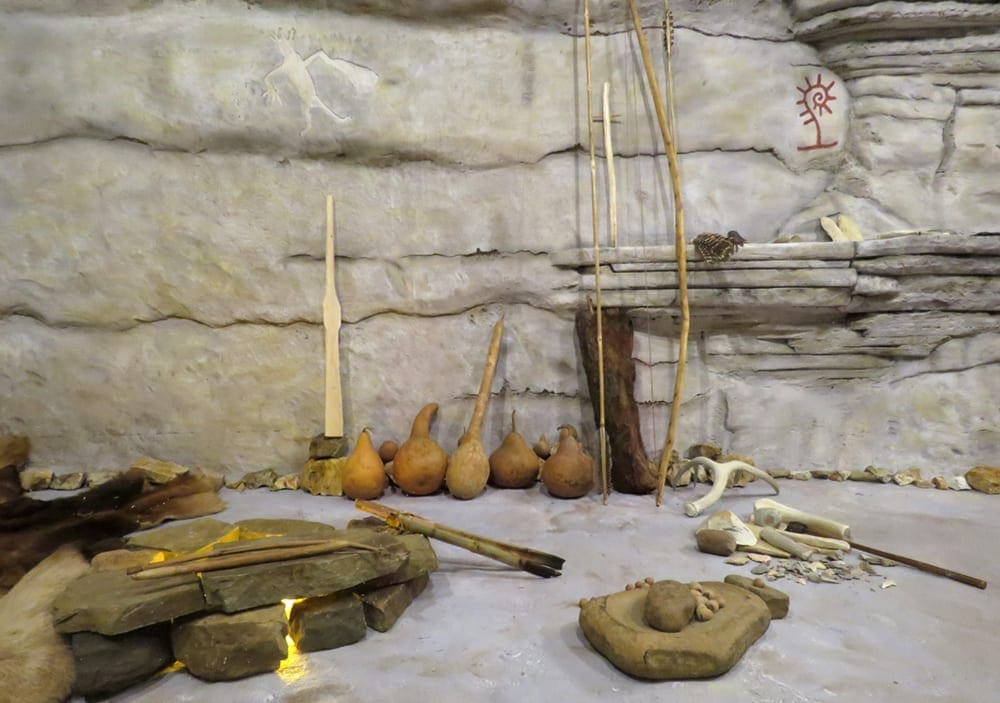Prehistoric Ozarks
Core Exhibit Indians first came to the Ozarks some 15,000 years ago, near the end of the Ice Age. They found a wet, cold climate and hills that were covered with spruce and pine trees. These prehistoric people did not settle down in one place, but instead roamed throughout the Ozarks pursuing big game animals like the mastodon and musk ox, as well as smaller game such as antelope and squirrel.
Indians first came to the Ozarks some 15,000 years ago, near the end of the Ice Age. They found a wet, cold climate and hills that were covered with spruce and pine trees. These prehistoric people did not settle down in one place, but instead roamed throughout the Ozarks pursuing big game animals like the mastodon and musk ox, as well as smaller game such as antelope and squirrel.
Over the next 2,000 years the climate in the Ozarks became warmer and drier. The large Ice Age animals became extinct, and the spruce and pine trees gave way to oak-hickory forests. These changes led to a new way of life for prehistoric Ozark Indians. The nomadic hunters settled down, and their diet began to include more plants, nuts, berries, and fish.
Diseases like smallpox and measles brought to America by Europeans may have led to the downfall of prehistoric Ozark Indians. By the time explorers and hunters made their way into Northwest Arkansas in the early 1800s, they found an area virtually uninhabited.

Indians first came to the Ozarks some 15,000 years ago, near the end of the Ice Age. They found a wet, cold climate and hills that were covered with spruce and pine trees. These prehistoric people did not settle down in one place, but instead roamed throughout the Ozarks pursuing big game animals like the mastodon and musk ox, as well as smaller game such as antelope and squirrel.
Over the next 2,000 years the climate in the Ozarks became warmer and drier. The large Ice Age animals became extinct, and the spruce and pine trees gave way to oak-hickory forests. These changes led to a new way of life for prehistoric Ozark Indians. The nomadic hunters settled down, and their diet began to include more plants, nuts, berries, and fish.
Diseases like smallpox and measles brought to America by Europeans may have led to the downfall of prehistoric Ozark Indians. By the time explorers and hunters made their way into Northwest Arkansas in the early 1800s, they found an area virtually uninhabited.
